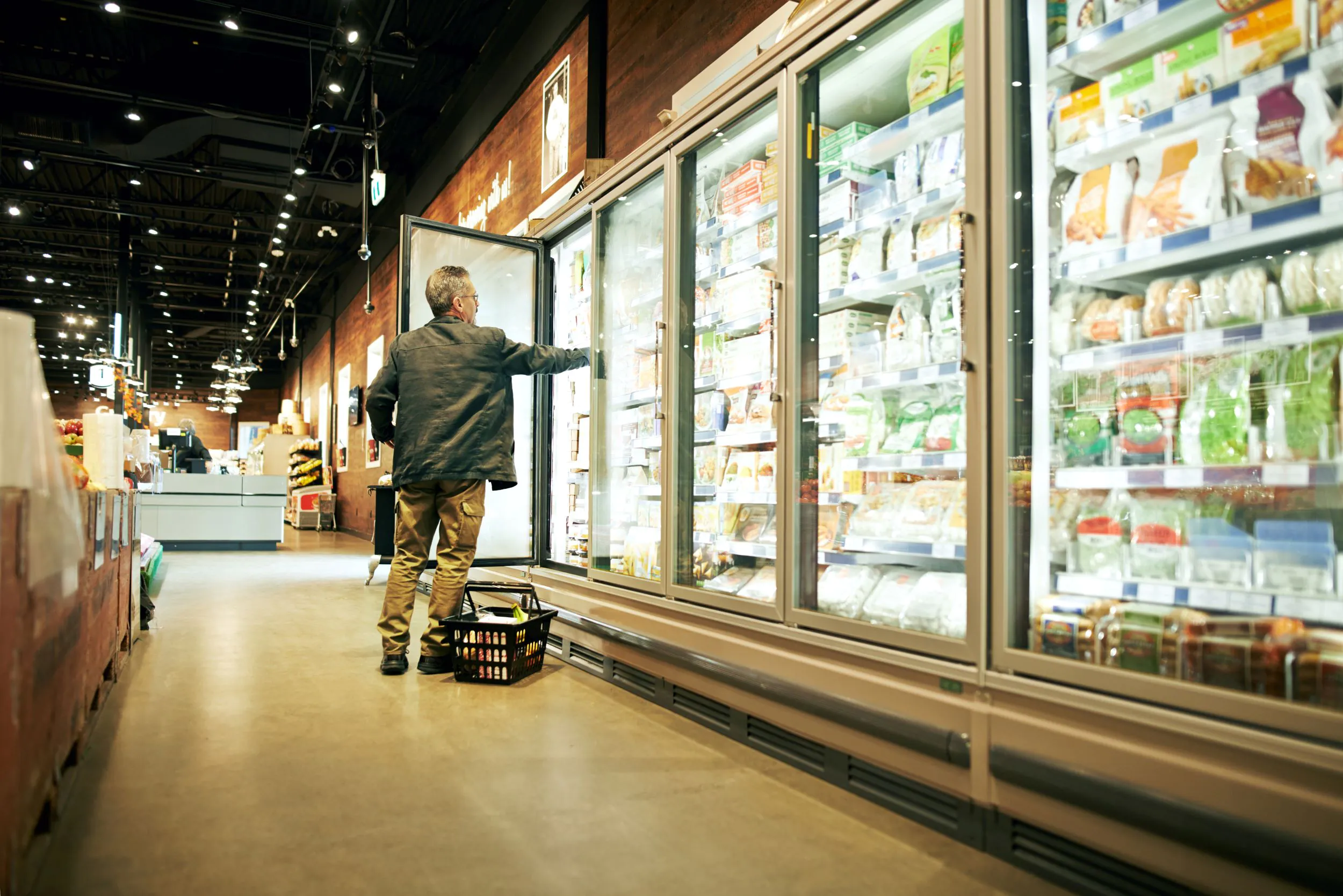The frozen food industry experienced a substantial boost in revenue during the course of the pandemic. Consumers dined in more frequently and also sought out foods that could be stored for long periods of time, in case of lockdowns or shortages. While unit sales have fallen somewhat since the sharp increase in 2020, they remain above pre-pandemic levels. The influence of the pandemic on consumer purchase habits combined with other current and emerging trends will continue to boost the market in the coming years.
Frozen Food Industry Overview
The global frozen food industry is currently valued at roughly $340 billion and is expected to grow by almost $100 billion over the next five years. Europe is the largest market for frozen food products, with high consumption levels across the region. Improving living standards and higher demand for convenience products are helping drive this interest. Countries such as Germany, the UK, and France are key consumers of these products.
Asia-Pacific, meanwhile, is the fastest-growing region when it comes to demand for frozen food. Growing purchasing power and changing lifestyles are helping boost the popularity of frozen food, as an increasing percentage of the population moves to urban areas, more women enter the workforce, and household incomes increase. Quality and convenience are two of the key reasons people are opting for frozen food, with baked goods being the fastest-growing segment. These include products such as dough, bread, and rolls as well as desserts such as cakes.
Ready-made meals constitute the largest segment of the market in terms of product type. Close to half of the frozen food industry’s revenue comes from frozen meals and this isn’t likely to change over the next several years. Both the variety and quality of frozen meals have been rising for some time, making them popular both for their convenience as well as for their ability to serve people with different dietary needs and preferences.
While not a leading segment, frozen potato products such as fries are a perennial favorite. And the fastest-growing category is the fruits and vegetables segment, as an increasing number of consumers opt for these products over perishable fresh produce. The global population is becoming increasingly health-conscious as well as more active in reducing waste. Choosing frozen fruits and vegetables means that leftover items are much less likely to go bad before they can be used, and freezing preserves much of the nutrients and other beneficial qualities present in fresh produce, making frozen an appealing choice for many consumers. Frozen produce also often is ready to use immediately and doesn’t require preparation such as peeling and cutting, helping busy cooks save time.
The Ongoing Impact of the Pandemic
The COVID-19 pandemic impacted the frozen food industry in multiple ways, many of which are still being felt today. While lockdowns and supply chain disruptions made manufacturing and logistics challenging, the pandemic also brought changes in consumer behavior that have been beneficial to the industry. As mentioned above, many people increased their purchases of frozen and shelf-stable foods to prepare for lockdowns and shortages — and some continue those habits even though those particular risks have passed — but there have been other changes as well. The spread of COVID-19 has brought an increased focus on health and wellness, as people try bolster their immune systems and seek out both medical and alternative health treatments. This has helped boost the popularity of frozen produce as well as specialty diets. Frozen foods that cater to those diets are seeing a rise in demand, and manufacturers are producing a wider variety of frozen foods in order to satisfy this demand.
Other Trends in the Frozen Food Industry
Meat alternatives and sustainability: Along with an increased focus on healthy eating, consumers are also becoming more socially and environmentally conscious. A growing number of people are choosing vegetarian, vegan, or “flexitarian” diets — that is, reducing meat consumption without entirely eliminating it. Awareness of the tolls that meat production can take on the environment combined with the growing impacts of climate change are motivating many people to eat less meat. The increasing quantity and sophistication of meat alternatives is helping to encourage this process, as consumers are more likely to find a meat substitute that appeals to them and meets their dietary needs. Frozen food manufacturers are therefore increasing their meatless product offerings in order to meet this growing demand.
Packaging innovations: The sustainability trend is affecting more than just ingredients, however. Manufacturers across industries are making efforts to reduce the use of plastic and other hard-to-recycle materials in their product packaging. Paper, cardboard, and specialized coatings are all seeing an uptick in usage as the frozen food industry makes its packaging more environmentally friendly.
New types of packaging are also being developed to improve the freshness and shelf life of frozen foods. New pouches and other packaging materials can prevent nutrient loss and allow some foods to go directly from the freezer to the microwave without the need for dishes.
Frozen over restaurant food: The early months of the pandemic led to many people opting for frozen meals over restaurant food, and those habits have continued to some degree. But COVID concerns aren’t the only reason some people are replacing dining in and takeout with frozen food. Inflation is another significant factor: as costs for many everyday items continue to increase, consumers have less disposable income available and are looking for ways to reduce their spending. Frozen food allows for low-effort meals at a lower cost than going to restaurants.
There are some types of food that consumers are less particular about in terms of restaurant quality versus frozen. For example, a study has found that 40% of Americans don’t care where their pizza comes from, whether it’s from a supermarket or restaurant. As costs continue to rise, many people are choosing frozen pizzas, and many who buy pizza from restaurants will also buy it from a grocery store.
Managing Challenges for a Healthy Future
There’s a lot of potential for the global frozen food industry, but there are challenges as well. As the industry grows, so does its reliance on cold storage supply chain infrastructure. A significant percentage of food is lost annually due to inadequate cold storage, and if growth in the frozen food industry outpaces growth of the supply chain it uses, it will be difficult to safely move an adequate volume of products.
However, businesses are working on packaging and other technology to improve the preservation of temperature-sensitive products. From insulating bags and pouches to specialized warehouses, the cold storage supply chain is becoming more resilient.



